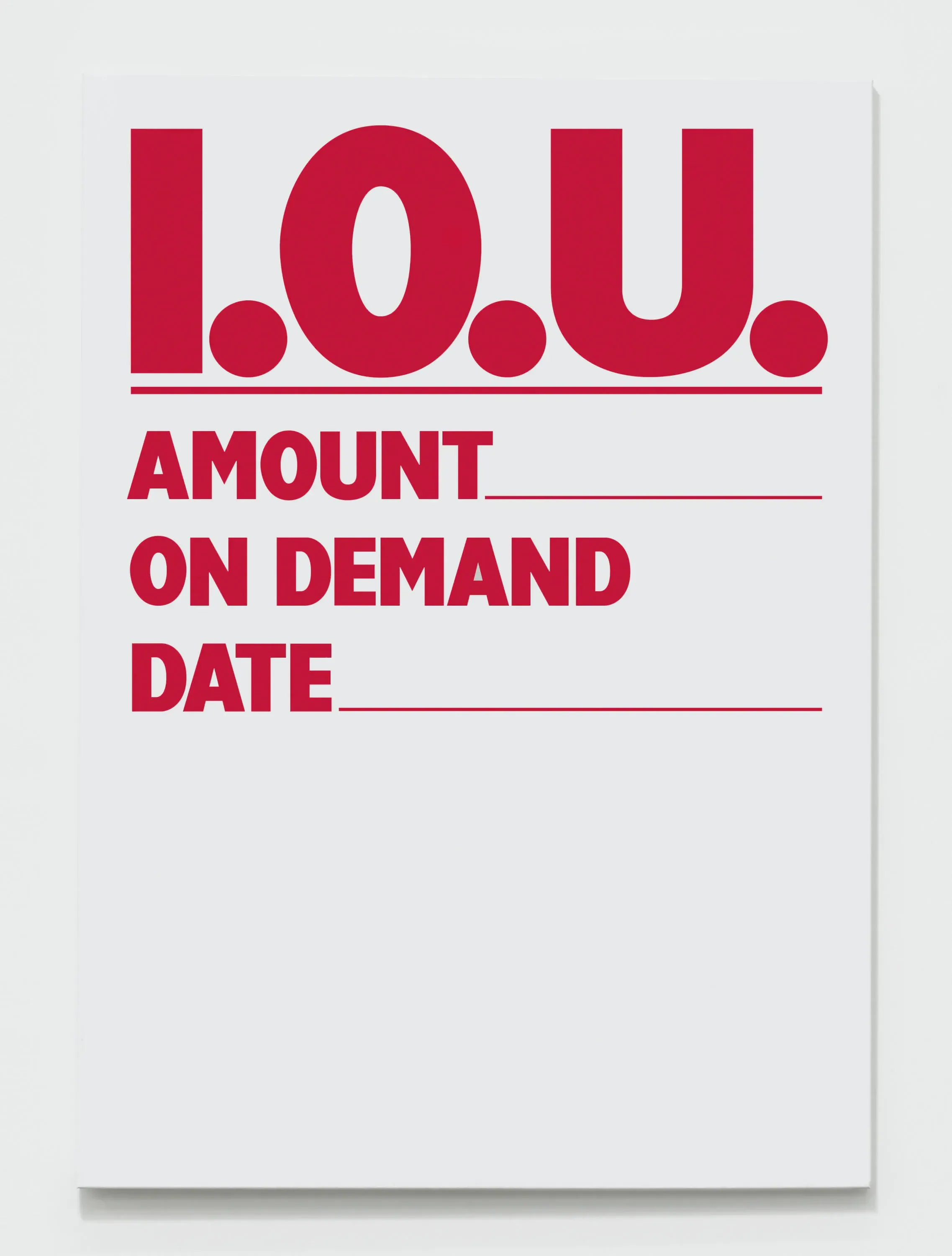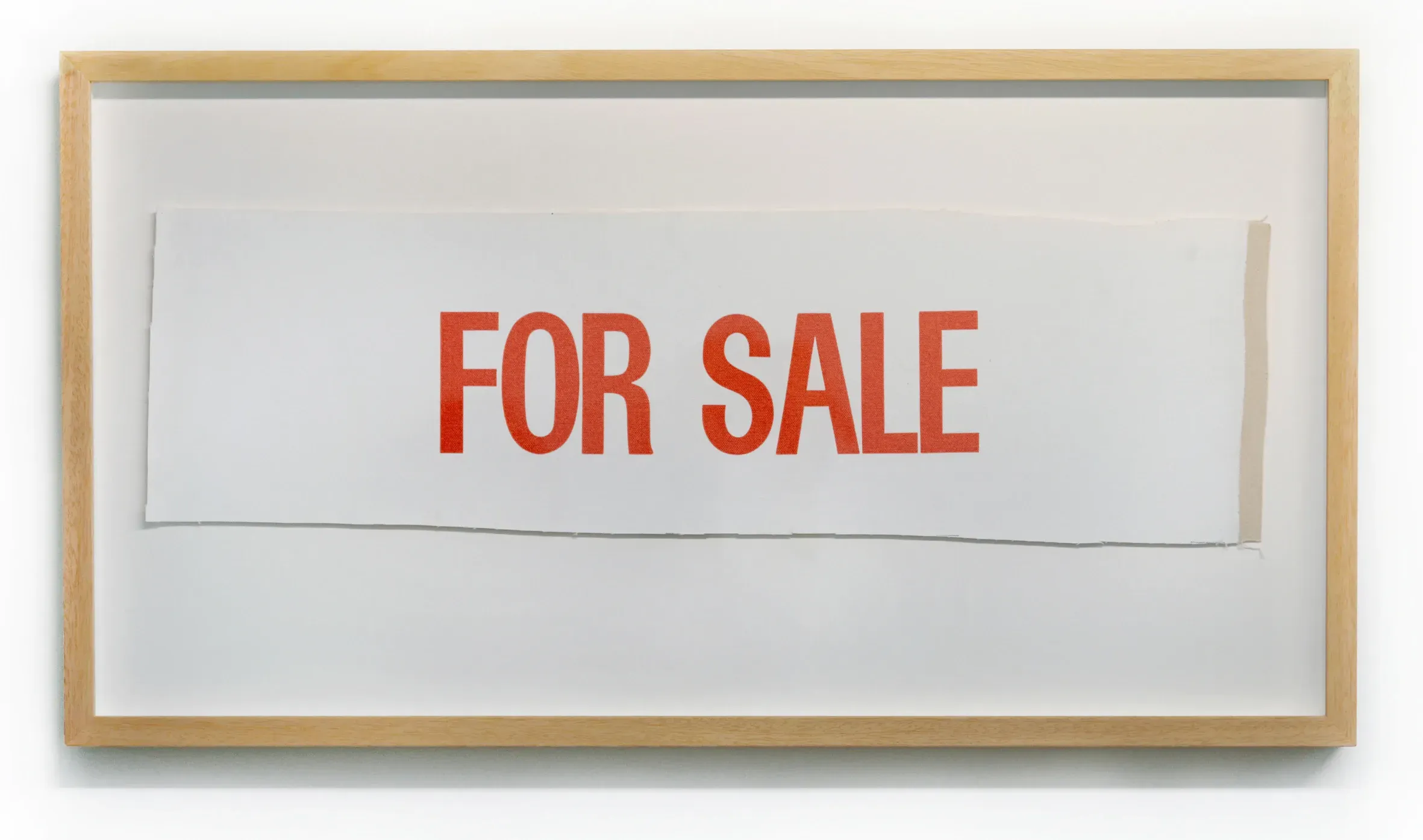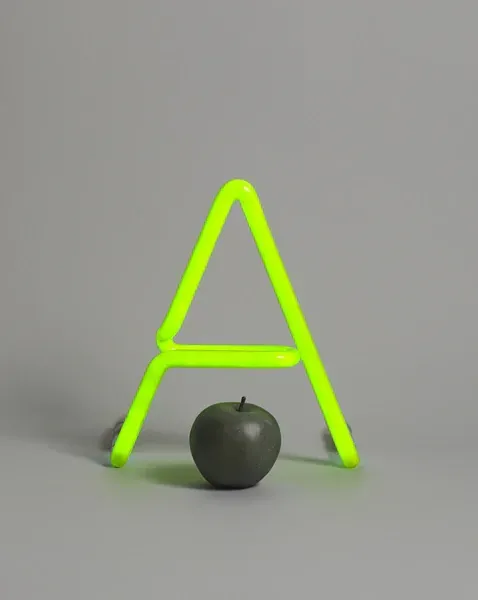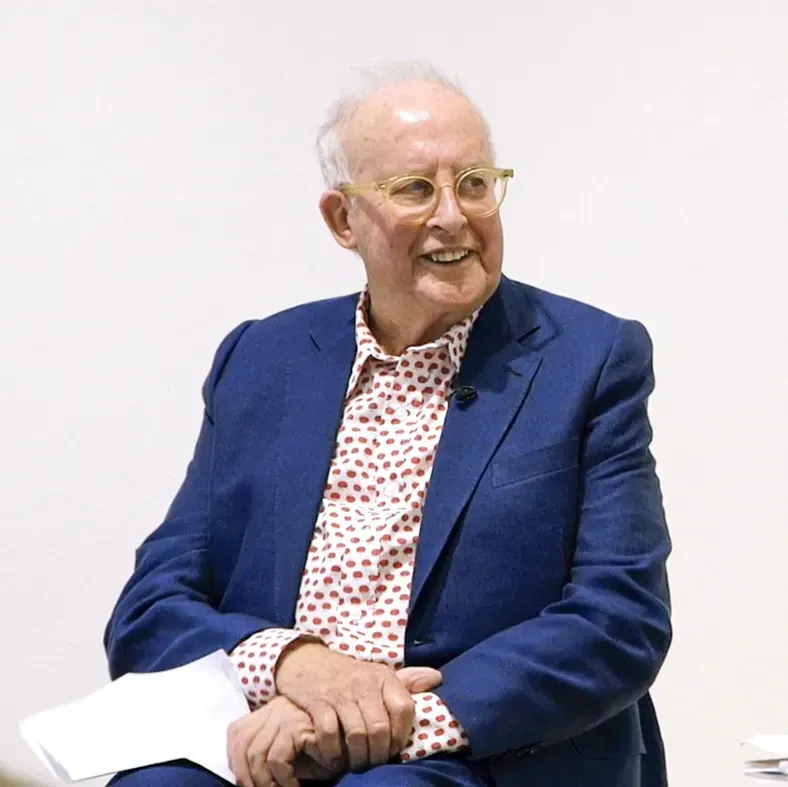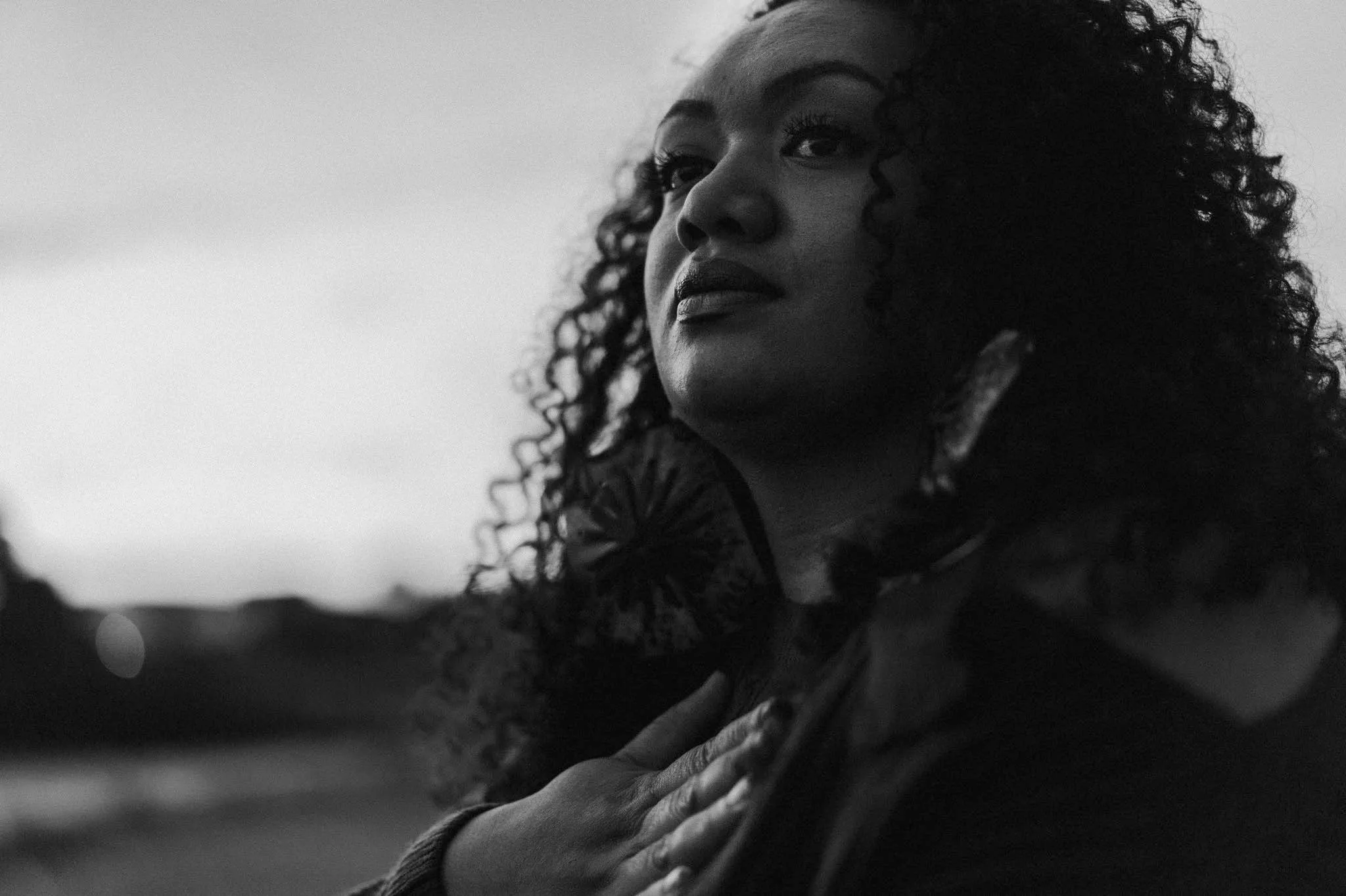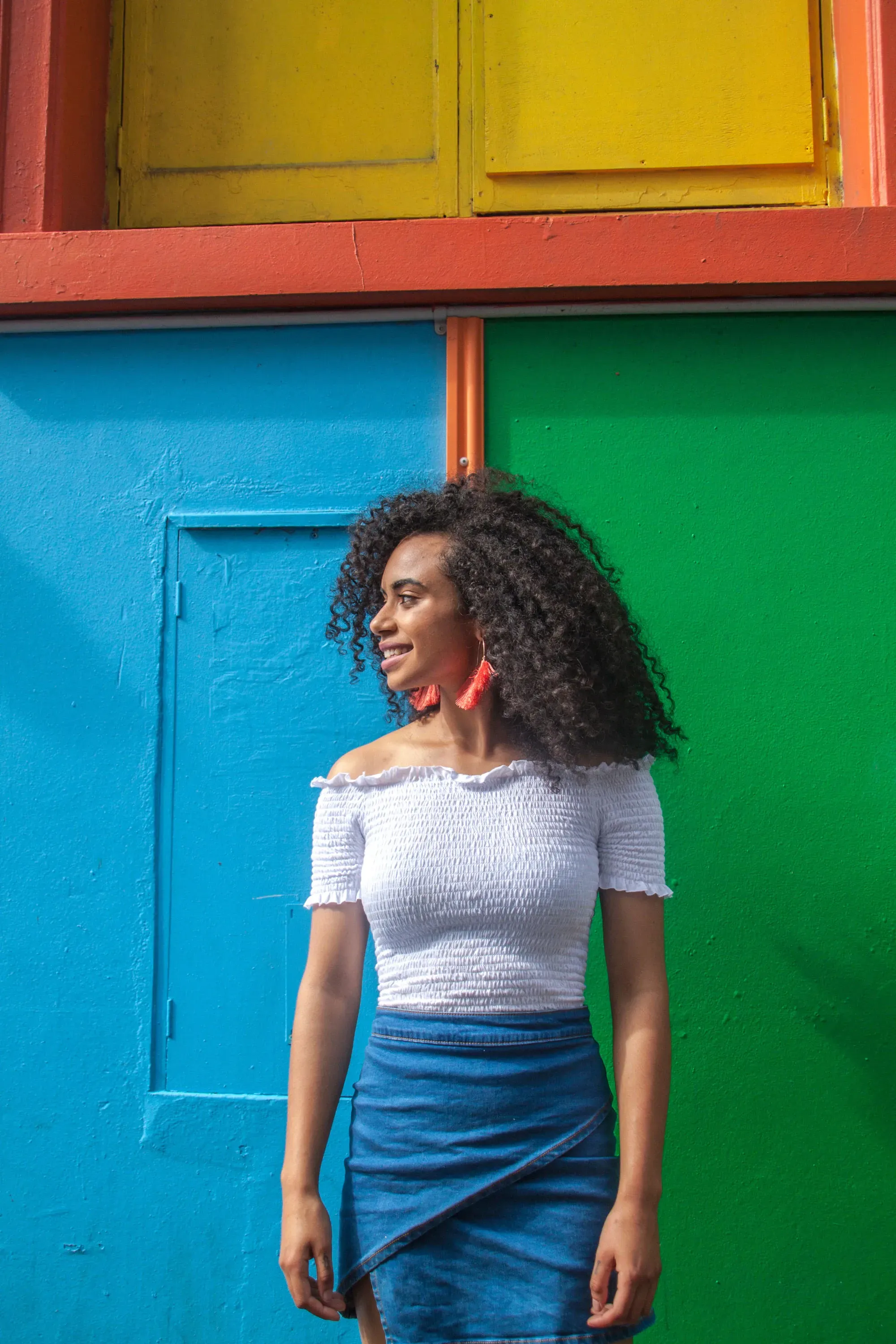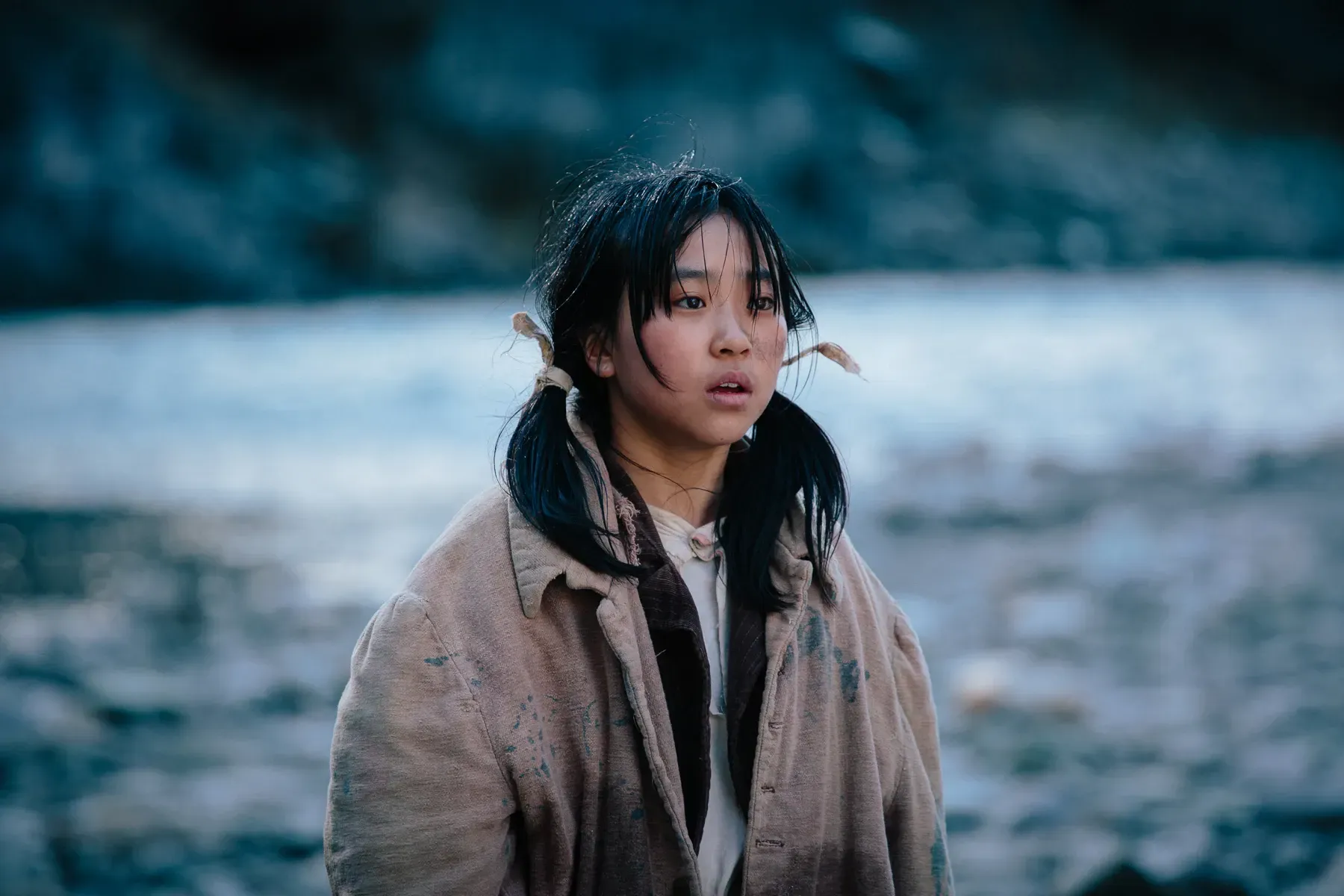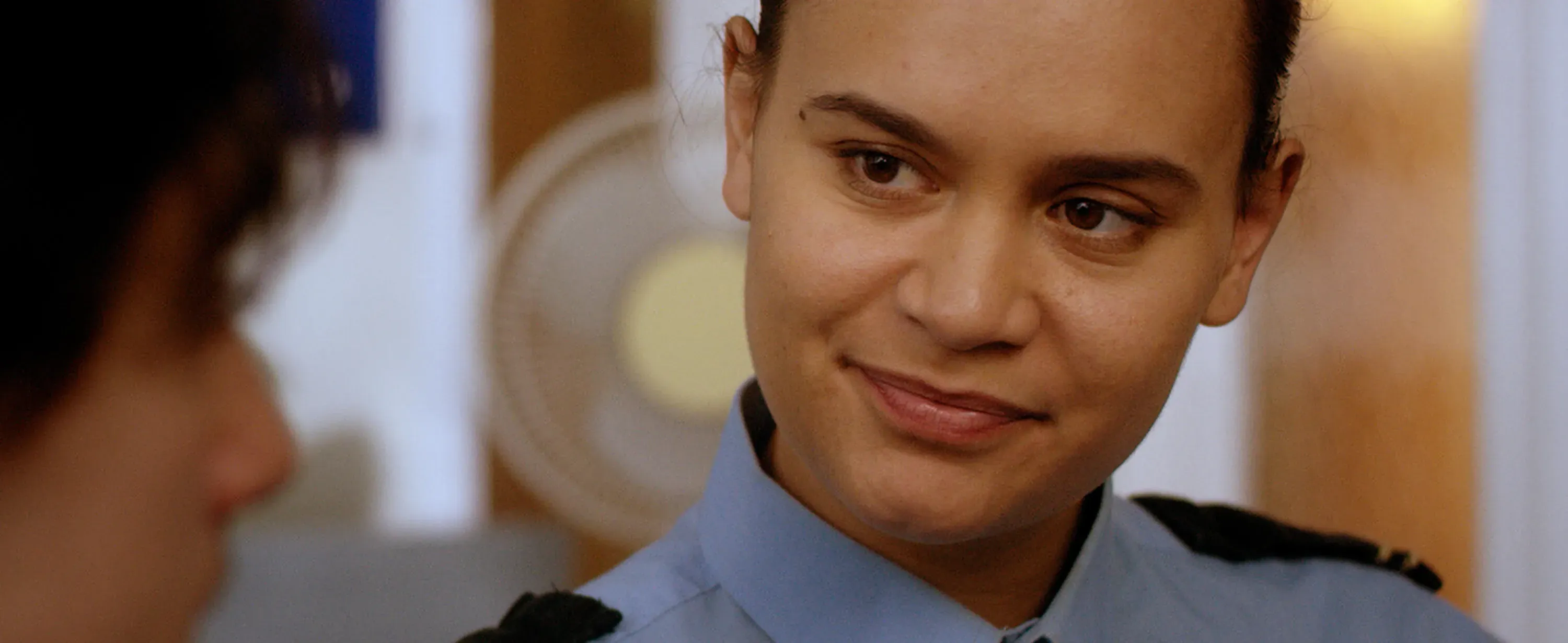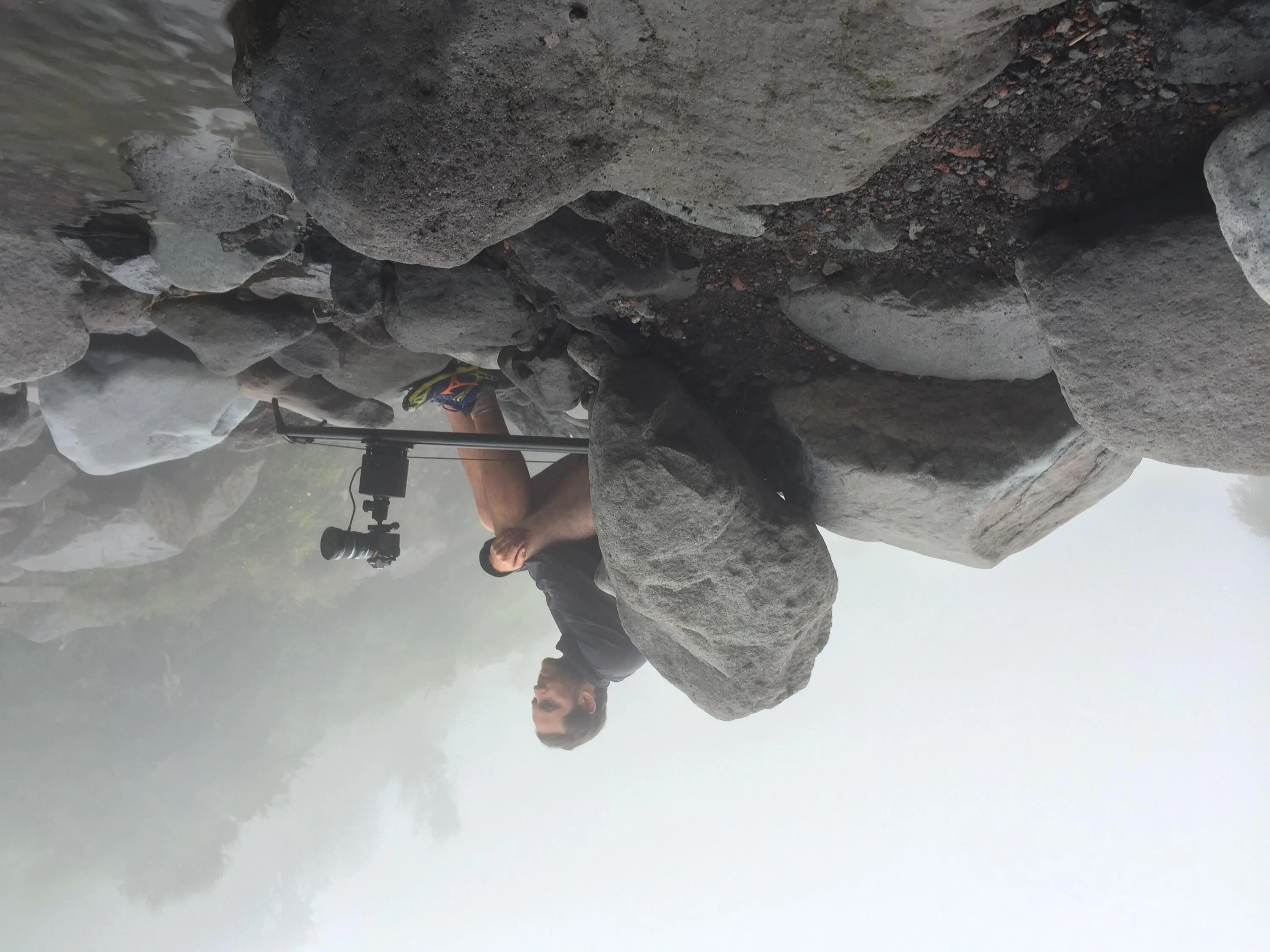Then, Now, Forever: Game-Changers
Written by
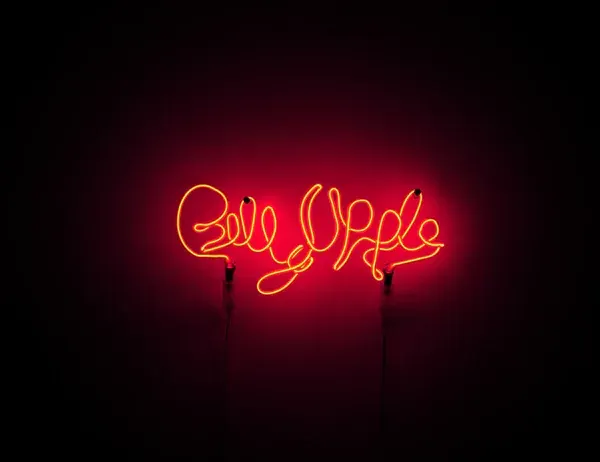
Sometimes, superlatives fail to fully describe the impact certain people have on their chosen fields.
More than ground-breaking, more than revolutionary, more than iconic. Billy Apple carved a path for himself no New Zealander had even done before.
It explains the huge reaction from creative minds and arts lovers around the country and the globe after his passing on Monday morning at 85 years old.
Whether you were a fan of his work or not - his impact and journey is one that anyone in the creative fields should know about.
If you’re unfamiliar with the finer details of the man who left our shores as Barrie Bates before returning as Billy Apple after earning a reputation alongside the likes of David Hockney and Andy Warhol, Vicki Holder’s interview with Apple here on The Big Idea backgrounding his approach and achievements is a must-read. It includes the great advice “to be successful, whether you’re a painter, a sculptor or any kind of artist, the way forward is to think harder.”
Holder and Apple’s friends have also offered an insight into Billy Apple the person, rather than the artist. Charismatic yet cantankerous, his personality left as big an impression on those he met as his work, as these anecdotes show. It also outlines the importance of his loving partner Mary Morrison, for whom the creative community sends all its aroha.
Stuff also put together a strong retrospective on his game-changing career and life, where Wellington gallery owner Hamish McKay described Apple as “Conceptually rigorous” and “unique and authentic.”
In the same article, Art writer and critic Anthony Byrt explains “Another artist once said to me that the real mark of greatness is how much someone makes possible for the people who follow them.
“By that measure, Billy was one of the genuine greats. Contemporary art in New Zealand wouldn't have been the same without him. There are now several generations of us who owe Billy a huge debt.”
Those looking for an even deeper dive into the genius of Apple (especially if you still have Lockdown time on your hands) may want to check out the documentary Being Billy Apple.
The film’s producer and director Leanne Pooley told The Lowdown “he played a little bit of cat and mouse about whether he wanted to be in the documentary, but I felt confident he’d like the idea of a film being made about him, another example of his work and his world colliding…and ultimately he agreed.
“People had warned me that he’d be difficult, but he wasn’t. He understood that the film was MY work, in that space I was the artist. He got it and we got on really well throughout the process.”
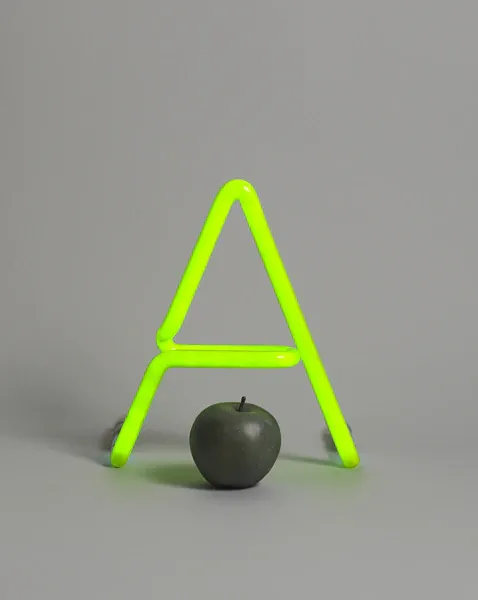
A For Apple, neon and bronze apple, 1962-63, 24 x 21 x 15.5 cm. Photo: Billy Apple® Archive and The Mayor Gallery, London.
Pooley explains Apple “was always at the forefront of what was happening. From the early Pop days in London, to the conceptual works he made and hosted at his gallery in New York…his melding of art and commerce in the 1980s right through to today….he’s used his genes, his actual DNA in his work, he’s immortalised and in a way, he always has been.”
His dedication to his work is legendary. Pooley recounts a story about Apple being so obsessive about the nature of what he was doing that sometimes he couldn’t see beyond the art.
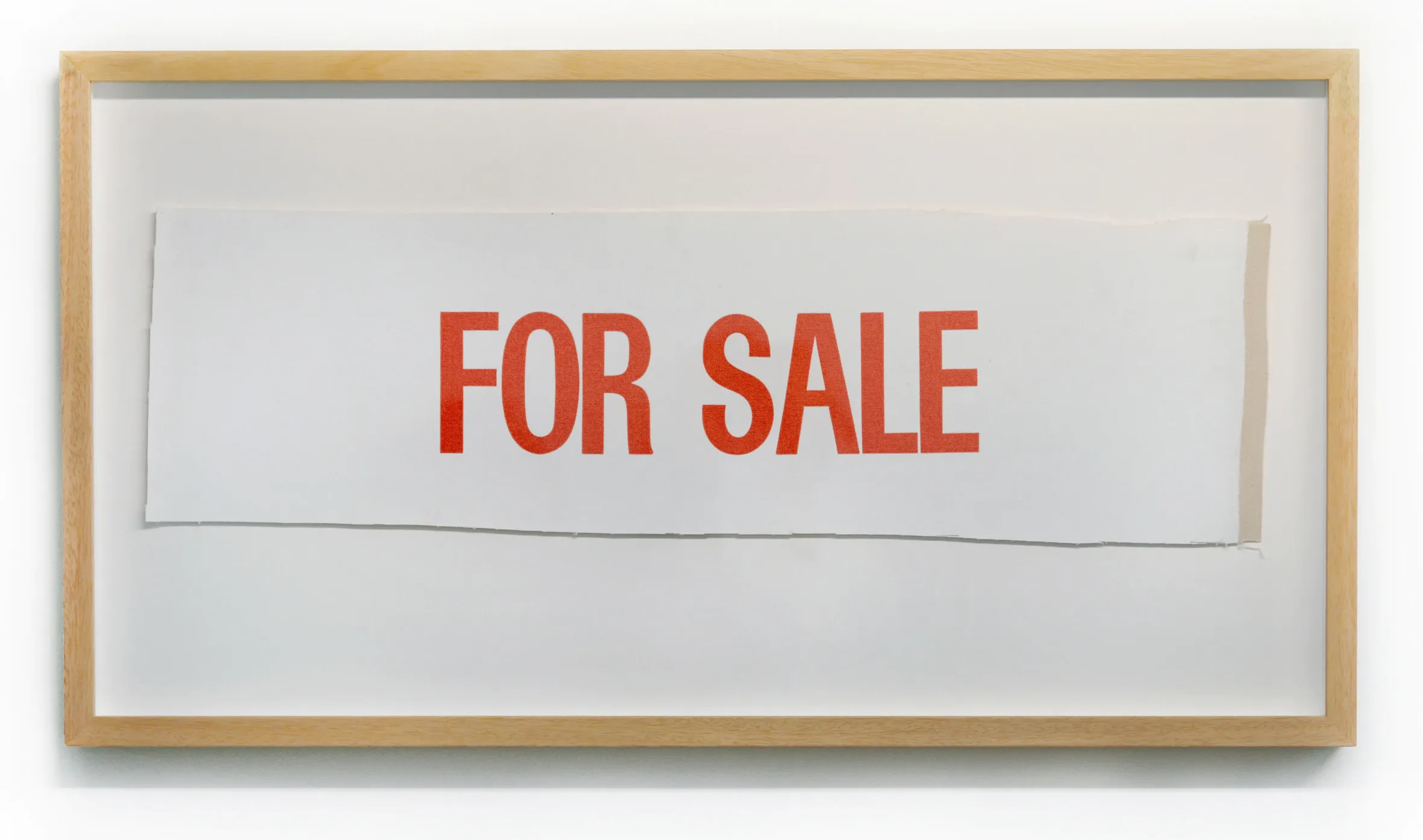
Promissory Notes, IOU, 1984/2018, UV ink on canvas, 119 x 84 x 3.5 cm. Photo: Billy Apple® Archive and The Mayor Gallery, London.
“After he changed his name and BECAME “Billy Apple”, a living work of art - groundbreaking at the time - he moved from London to New York. He did this without telling his parents in New Zealand, they had no idea what had happened to their son, Barrie Bates.
“They wrote to the London police and filed a missing person report! When I asked Billy about this he thought it was an odd question. Why would he contact his family…he wasn’t their son anymore, he was a new person, a new work of art.”
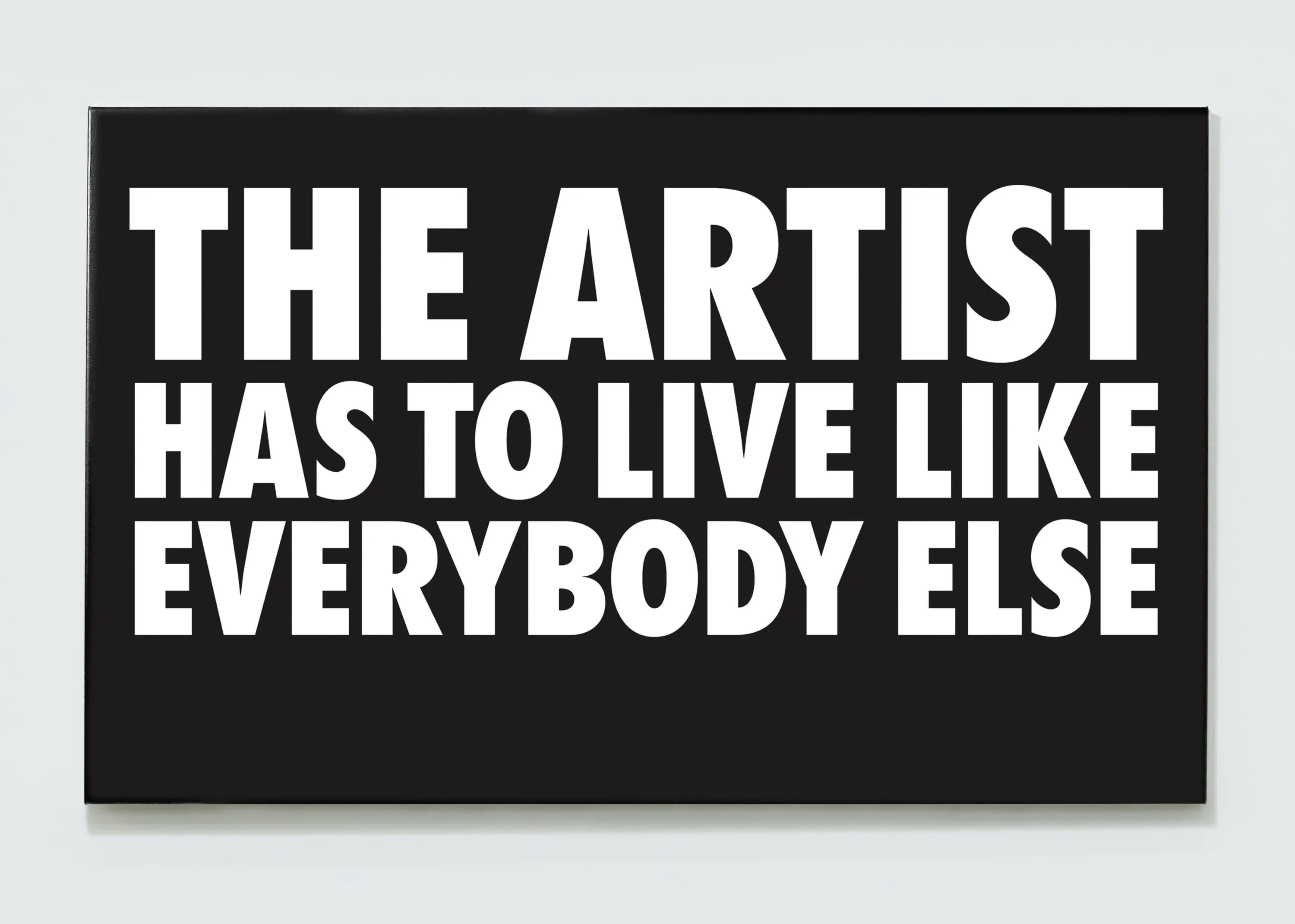
The Artist Has to Live Like Everybody Else, 1985/2018, UV ink on canvas, 100 x 162 x 3.5 cm. Photo: Billy Apple® Archive and The Mayor Gallery, London.
Given she spent so much time talking about his work, we asked Pooley for an insight into how his mind worked. She replied that she didn’t know it’s possible to explain.
“He was unique on so many levels. I think his practice really was served by the time he spent working in advertising, he was all about the ‘idea’.
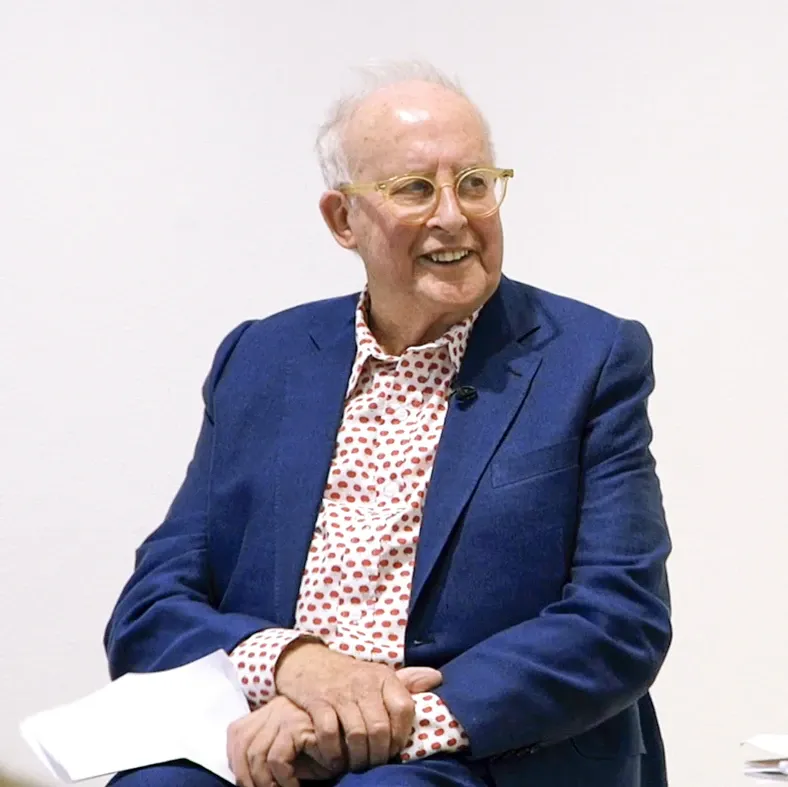
Billy Apple at his 2018 exhibition 'The Artist has to Live like Everyone Else'. Photo: Billy Apple® Archive and The Mayor Gallery, London.
“When you talk about conceptual art you really can’t ignore Billy, concept was everything and while aesthetic mattered it was secondary to the idea. He had wonderful obsessions, like the Golden Ratio for example. Or the way he kept EVERYTHING…I mean he had subway tickets from his time in New York. Everything he did was part of the overall ‘artwork’ that was him. So he couldn’t throw anything away.
“It’s really hard to explain Billy because he almost defies explanation.”
The impact of his work - and his sudden death - travels far beyond our shores. Indeed, his passing is being reported in multiple countries and multiple languages around the globe. More than just his role in the art revolution with the likes of Warhol, Apple remained an international inspiration.

Promissory Notes, IOU, 1984/2018, UV ink on canvas, 119 x 84 x 3.5 cm. Photo: Billy Apple® Archive and The Mayor Gallery, London.
James Mayor of The Mayor Gallery in London that represents Apple’s work abroad for the last 12 years, told The Lowdown “his death is a tragic loss just as the world was beginning to understand how great and important an artist he was; starting in London and New York in the 1960s, right through his British and American years. He was completely up there with the avant-guarde artists whether it was Pop or Conceptual.
“We all have lost a great friend and artist whose influence will live on well into the future.”
The last exhibition Apple had a direct and notoriously firm hand in setting up - profiled in Holder’s story - is still showing at Napier’s MTG Hawke’s Bay until the end of the month, for anyone able to get there.
Making a stand
While Tāmaki Makaurau continues to languish in the Level Four doldrums, the rest of the country is getting its head around what Level Two means again.
And it’s a complex time for all of our arts and cultural venues.
Of course, it’s a welcome step in the right direction, but for many restrictions of 50 people indoors and 100 outdoors comes with different kinds of headaches - especially as indoor used to have double that amount under previous Level Two rules.
While Te Papa re-opens its doors as of today - with face masks mandatory and exhibits like the Surrealist Art feature working on restricted numbers - the restrictions are still holding performing arts venues in a chokehold.
Sam Brooks has taken an in-depth look at what the restrictions mean to venues and theatre companies at The Spinoff - suffice to say, financial viability is a crucial element.
Eleanor Strathern, who runs production company A Mulled Whine, illustrates the pressures to The Spinoff when talking about a show she has lined up for October “If it doesn’t (go ahead), that’s about 200-300 hours of work that will never be remunerated, and I’m not the only person in that boat.”
Sadly, there are so many on board, it’s more like a giant cruise liner with a leaky hull.
But voices are starting to rise up from within the creative community.
Max Tweedie, Executive Director of Auckland Pride has gone public with a call for “the Government to empower Creative NZ with specific funding to complement existing financial support, and to fill the gaps in resourcing the creative industries at Alert Level Two.
“While we support the need for increased restrictions in response to the Delta variant, the Government must ensure the burden doesn’t fall on our artists.”
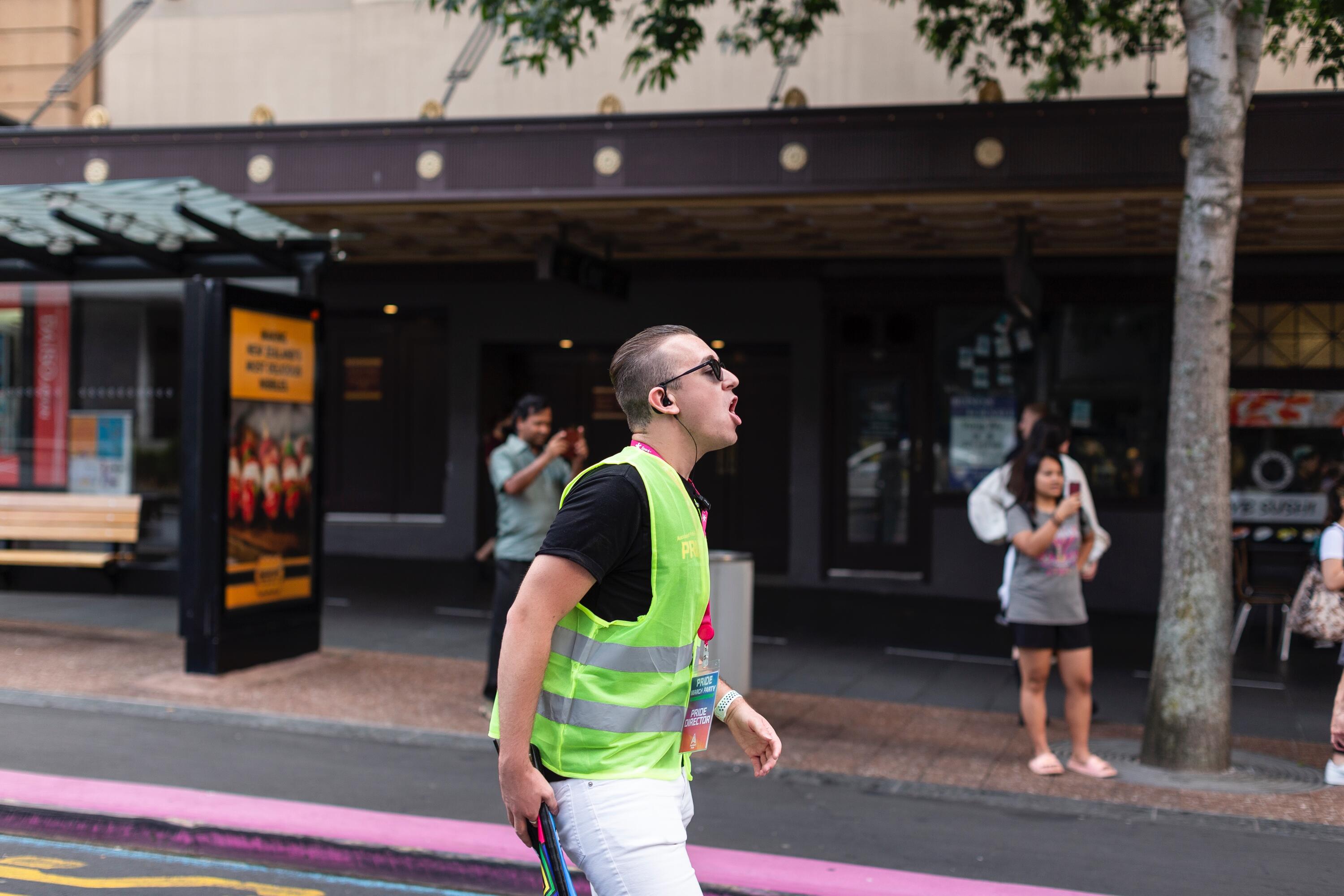
Max Tweedie during Auckland Pride March. Photo; Becki Moss.
The New Zealand Comedy Trust has followed suit, imploring the Government to extend the Wage Subsidy Scheme to live events workers and artists under Alert Level Two “recognising that our work is not able to be safely carried out under the new guidelines.”
Tweedie told The Lowdown he has “now got more experience than I would like of working with artists and venues to reschedule shows and manage the impact of alert level settings” after this year’s Pride Festival was hit twice with lockdowns.
“I’m concerned that because this isn’t our first lockdown, the Government has just stood up the wage subsidy and RSP and expected that to support every industry. I would like the Government to acknowledge that these restrictions impact different industries in different ways, and that we need targeted solutions to the challenges we face."
Tweedie says he’s had a lot of support for his stance on social media and from his peers. “We’re definitely keen to expand it into a sector-wide response, whether that’s through an open letter or petition I’m not sure, but I encourage anyone else who is keen to join us in requesting additional support from the Government to reach out so that we can stand together as an industry.
“We’ll be stronger as a collective - but I want us to take a constructive approach too, I don’t think whining in the media is the solution to this."
These calls have been heard in the corridors of power - even if no action has yet been taken.
The Ministry for Culture and Heritage’s Gordon McKenzie, (Establishment Lead, Investment & Outcomes) replied to The Lowdown “Manatū Taonga acknowledges the financial strain for organisers and disappointment for communities as events have had to be cancelled or rescheduled because of the continuing restrictions caused by the Delta outbreak.
"We’re monitoring the situation and impacts on the sectors, including engaging closely with Creative New Zealand.”
CNZ Chief Executive Stephen Wainwright signalled as much in his most recent blog, “we’ve been talking with the Ministry for Culture and Heritage Te Manatū Taonga, and Minister Sepuloni has met with Crown Entity chairs to get a quick understanding of the consequences of COVID-19 for the sector. We’re providing regular updates to the Government (via the Ministry) and offering advice where we can.”
When asked by The Lowdown, CNZ confirmed it has not been in touch with Tweedie regarding his comments but offered the following.
“Since our first experience of lockdown in March 2020, we’ve been constantly evolving our offering to the arts community, guided by the Arts Council. We’ve done our best to future-proof our grants programme so that we don’t have to suddenly put everything on hold while we figure out what to do or change direction, like we had to do when COVID-19 first hit last year.”
CNZ came to the rescue for many last year after emergency response funds were allocated to them - the pressure is now going on those who hold the purse strings at the Beehive to let them do the same again.
We discussed the potential of live event insurance in last week’s Lowdown - there’s been no advancement on those proposals, according to Stuff.
Postponement and pirouettes
The ongoing uncertainty is forcing several rethinks for arts events and organisations.
Amid a raft of cancellations and postponements, Te Tairāwhiti Arts Festival was set to open next month with the world premiere of te reo Māori opera event HIHĪ - A Song of Place - but couldn’t risk pushing on with it as Delta continues to hover menacingly.
HIHĪ has been shifted to 4 February next year, but Artistic Director and Chief Executive Tama Waipara is still planning for the rest of the 10-day Festival to go ahead from 8 October.
Those that have been able to move to digital delivery have been reporting success, including Royal New Zealand Ballet’s The Firebird. While disappointing it couldn’t be performed in front of live audiences, the online shift has seen an even bigger reach and getting strong international reviews.
The Lowdown has been told that to date, over 3800 tickets have been purchased, with more than 2800 hours viewed in 20 countries around the world - numbers that will only increase with the viewing window stretched out until next Thursday.
Fale-ship finalised
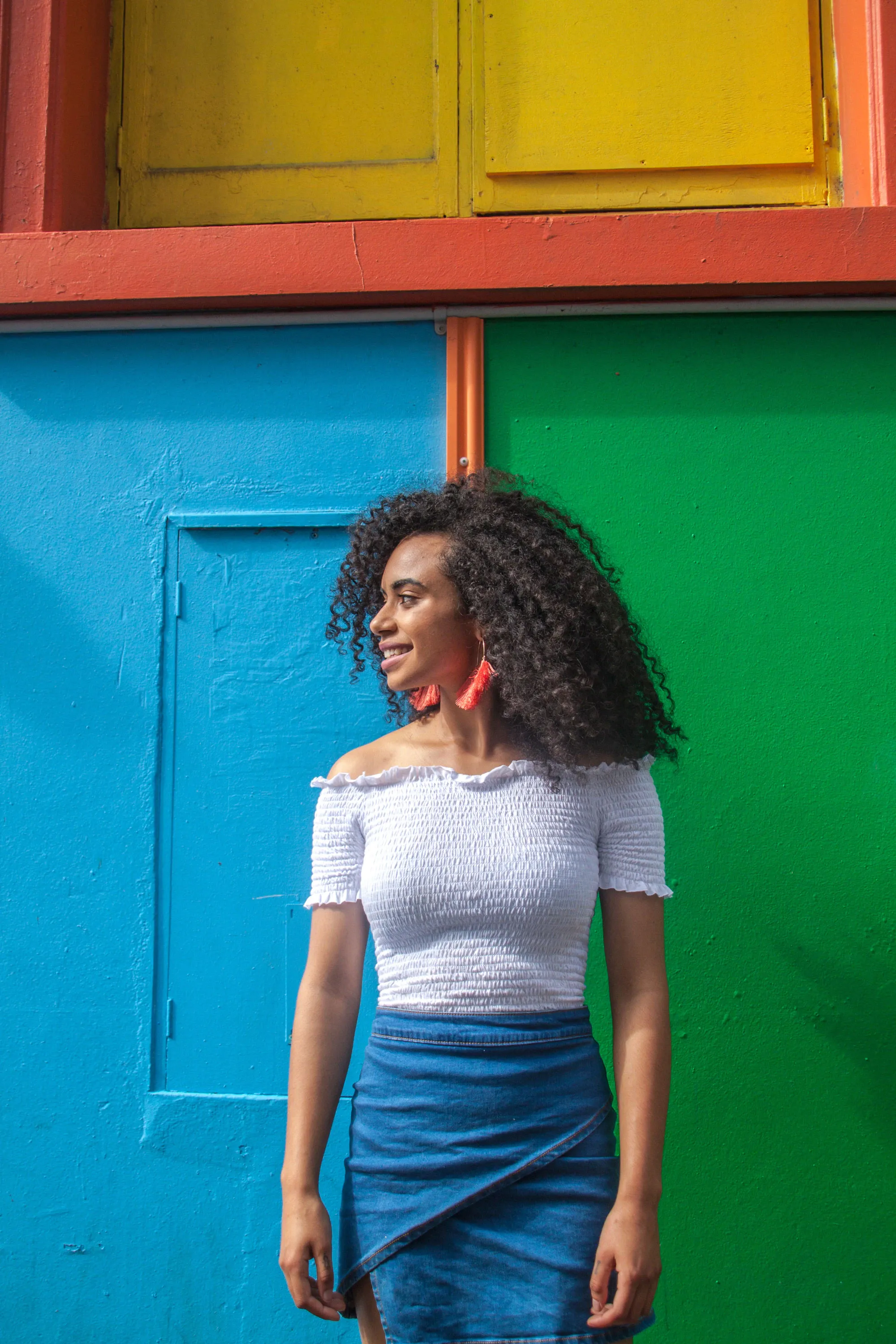
Tautai Fellow-ship recipient Elsie Andrewes. Photo: Supplied.
Another creative venture that Lockdown can’t halt is Tautai Contemporary Pacific Arts Trust’s proactive step in advancing the careers of Pasifika creatives.
In fact, this year’s Fale-ship Residency Programme recipients have Lockdown to thank for the opportunity - the concept was borne out of the initial pandemic bubble confinement of 2020.
The ten Tagata Moana creatives selected have just been announced: Elsie Andrewes (visual arts); Etanah Falagā Talapā (visual arts); ‘Isope ‘Akau’ola (dance); Kalisolaite ‘Uhila (performance art); Kasi Valu (writer); Marina Alefosio (music/poetry); Sione Faletau (visual/sound art); Tai Nimo (visual arts); Warren Paea (photography); and Teremoana Rapley (music).
Alefosio, who wants to grow the Pasifika youth sector through creative means says “as a Pasifika artist who constantly creates poetry and music and stories from the comfort of my home or my car or whenever/wherever I get the chance to, it means a lot that residencies like this are available to us for the mentoring, networking and the feeling of being part of a collective especially in lockdown and to come from a Pasifika-led organisation like Tautai is the koko in the koko alaisa. Fa'afetai tele lava Tautai for the support and the backing!”
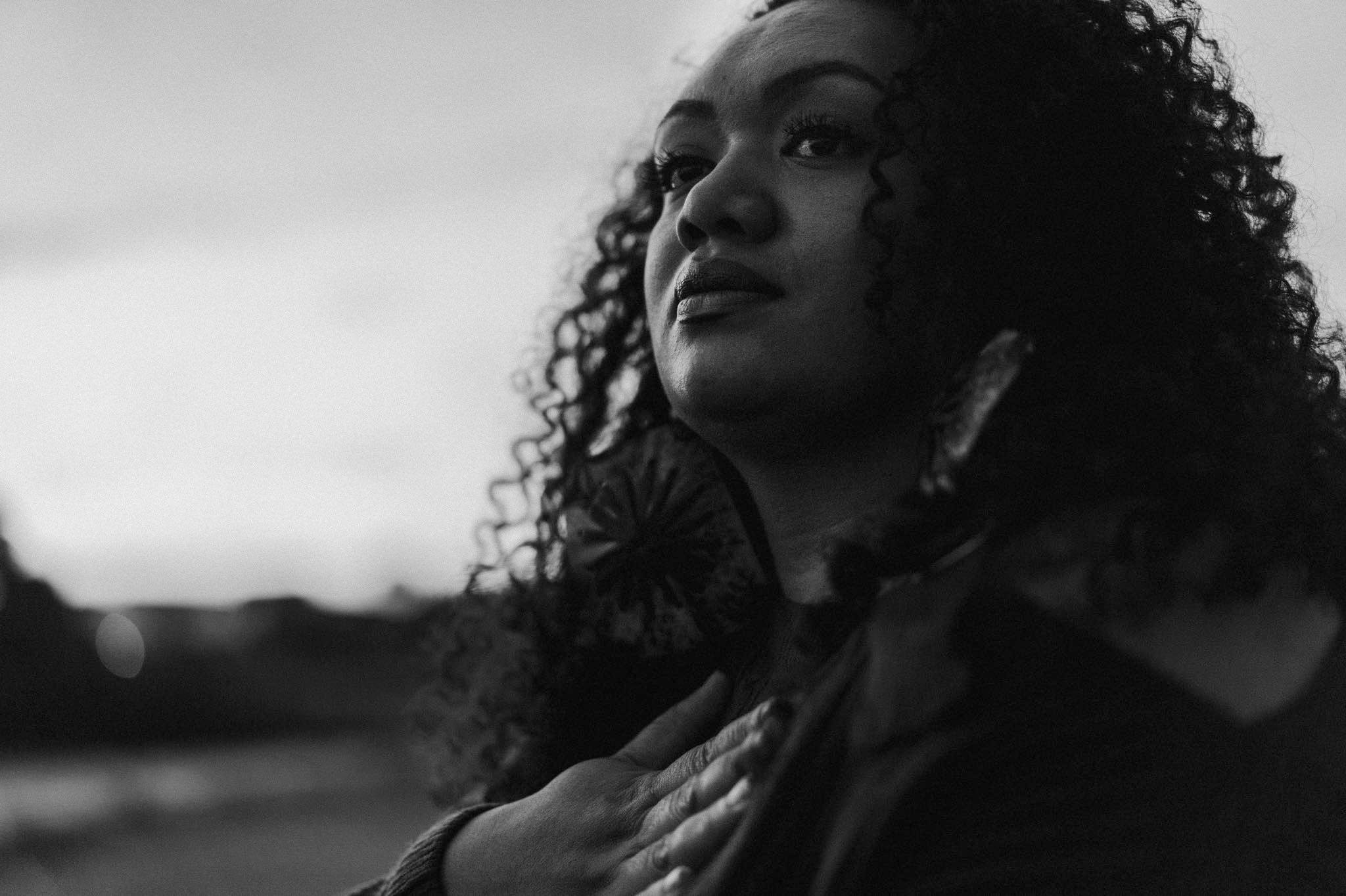
Tautai Fellow-ship recipient Marina Alefosio. Photo: Supplied.
The residencies take place this month with grants of $2000 to support the development of new or existing projects in their own creative centres spread throughout the country.
The Big Idea is proud to be an Ambassador organisation for this year’s Faleship alongside NZ Herald’s VIVA and Basement Theatre.
Short and sweet
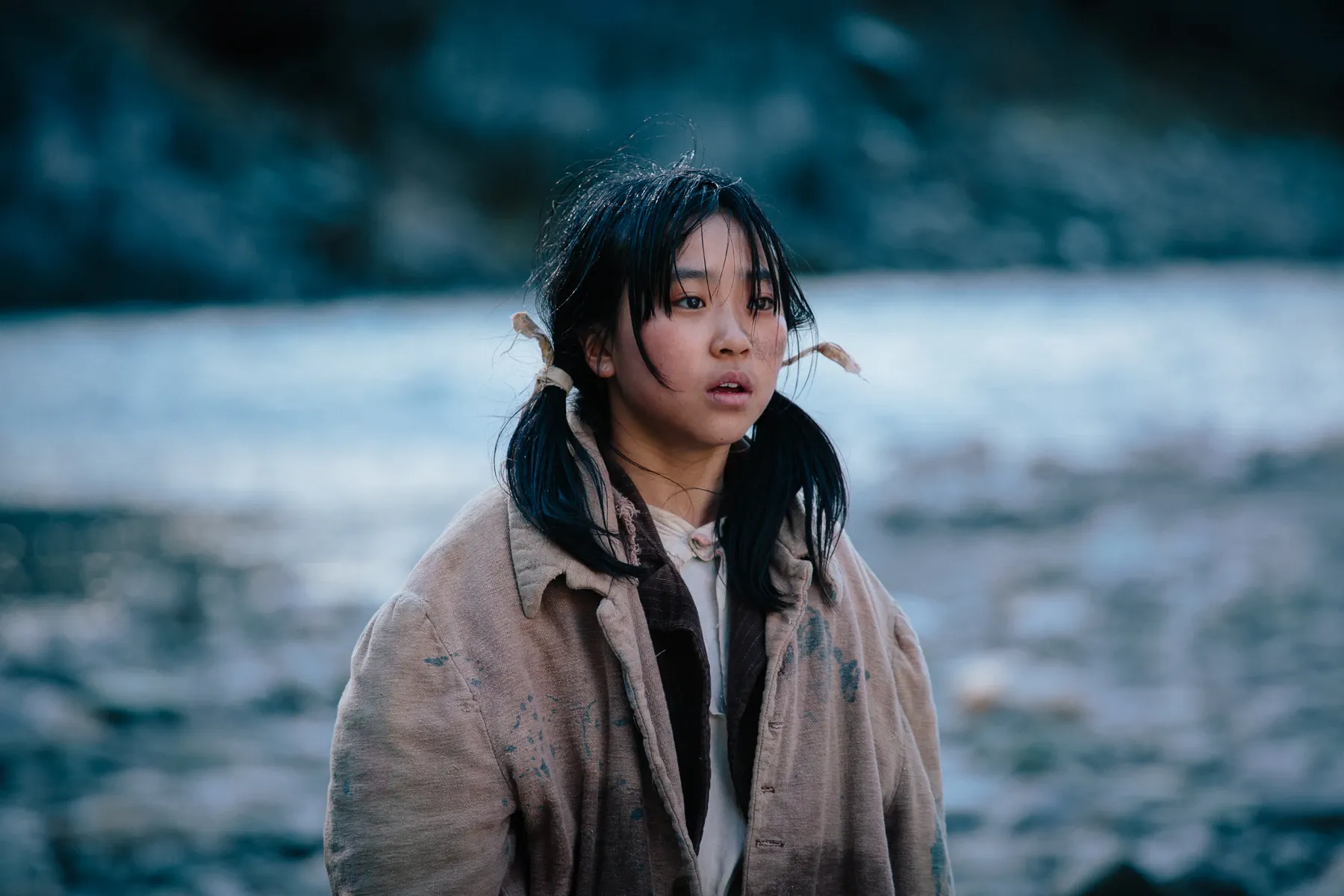
Still from Show Me Shorts entry Blood Gold.
If you’ve hit overload on lockdown binge-watching and need something to suit a shorter attention span, there’s plenty of offerings on the horizon.
The popular Show Me Shorts Film Festival’s revealed its lineup for the start of October (bravely declaring that it’s on….until it’s not) with 1600 entries from around the world whittled down to 75.
Among those making the cut are a range of Kiwi films, including The Woman in Blue that will see two of Aotearoa’s heavy hitters in Tanae Heke and Temuera Morrison combine. The festival is also a potential ticket to the Oscars, with both the Best NZ and International Film category winners qualifying to enter the Academy Awards.
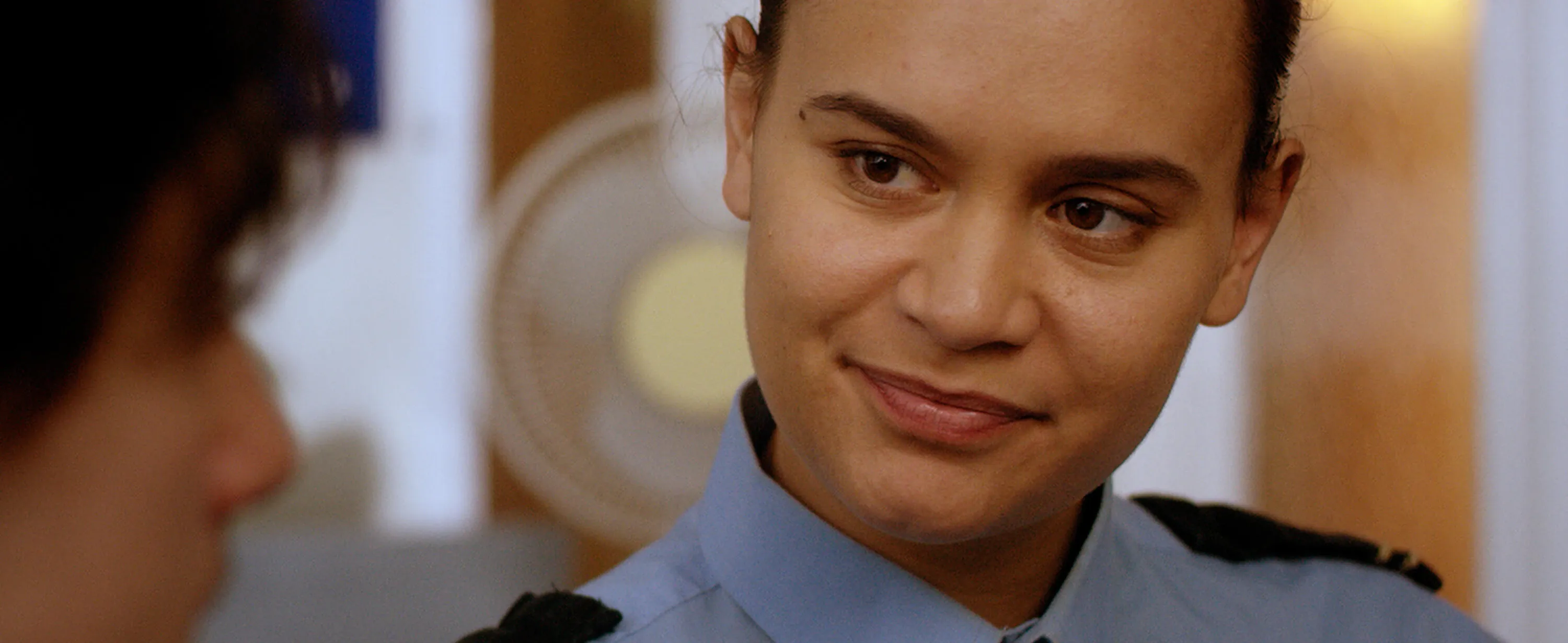
Still from Show Me Shorts entry The Woman in Blue.
Short films are also offering the chance at more success for another NZ creative.
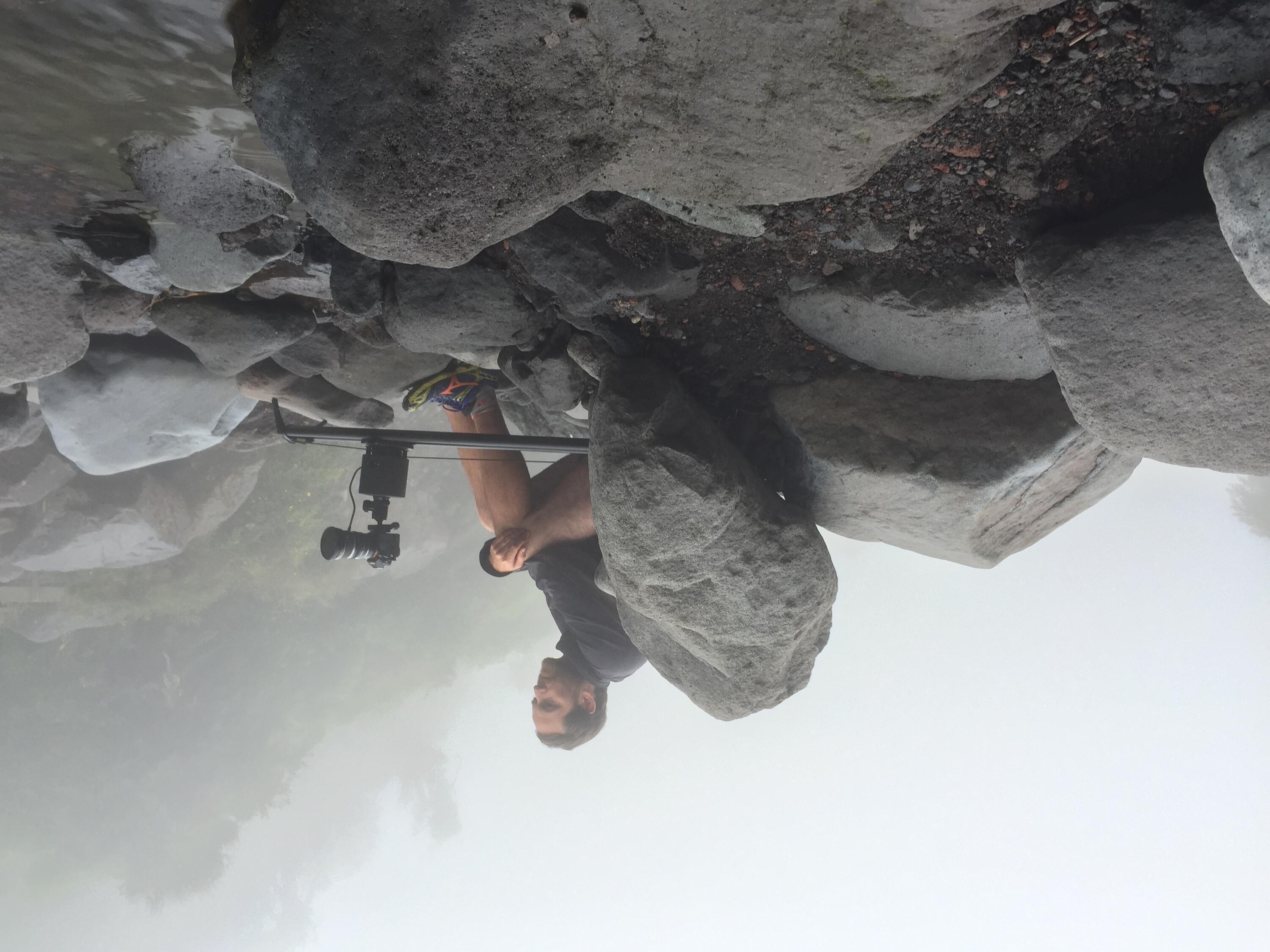
James Muir on location. Photo: Supplied.
Waikato-based documentary filmmaker, James Muir has three of the five films up for the Non-fiction award of the inaugural Sony Film Festival awarded at the end of the month. With entries coming from both sides of the Tasman, the proviso for entry is that the films are shot on the sponsor’s merchandise.
No stranger to awards throughout his career, Muir told The Lowdown he’s stoked. “I’m blown away that all three of the films I entered (Antarctic Waters, The Fate of Giants - voiced by Jennifer Ward-Lealand - and Pigman) can be given such amazing recognition. To have one film in the top five finalists would have been awesome, so I’m feeling very humbled.”
Describing his work as “inspired by science, poetry, music, art and the subtle details of the natural world,” Muir says “telling these stories to wider audiences is really about getting more people engaged in the stories of nature and wilderness and connected into the lives of people who we may otherwise never see or understand.
“What I hope to achieve is to inspire, engage and motivate people to care for the earth and to care for each other.”
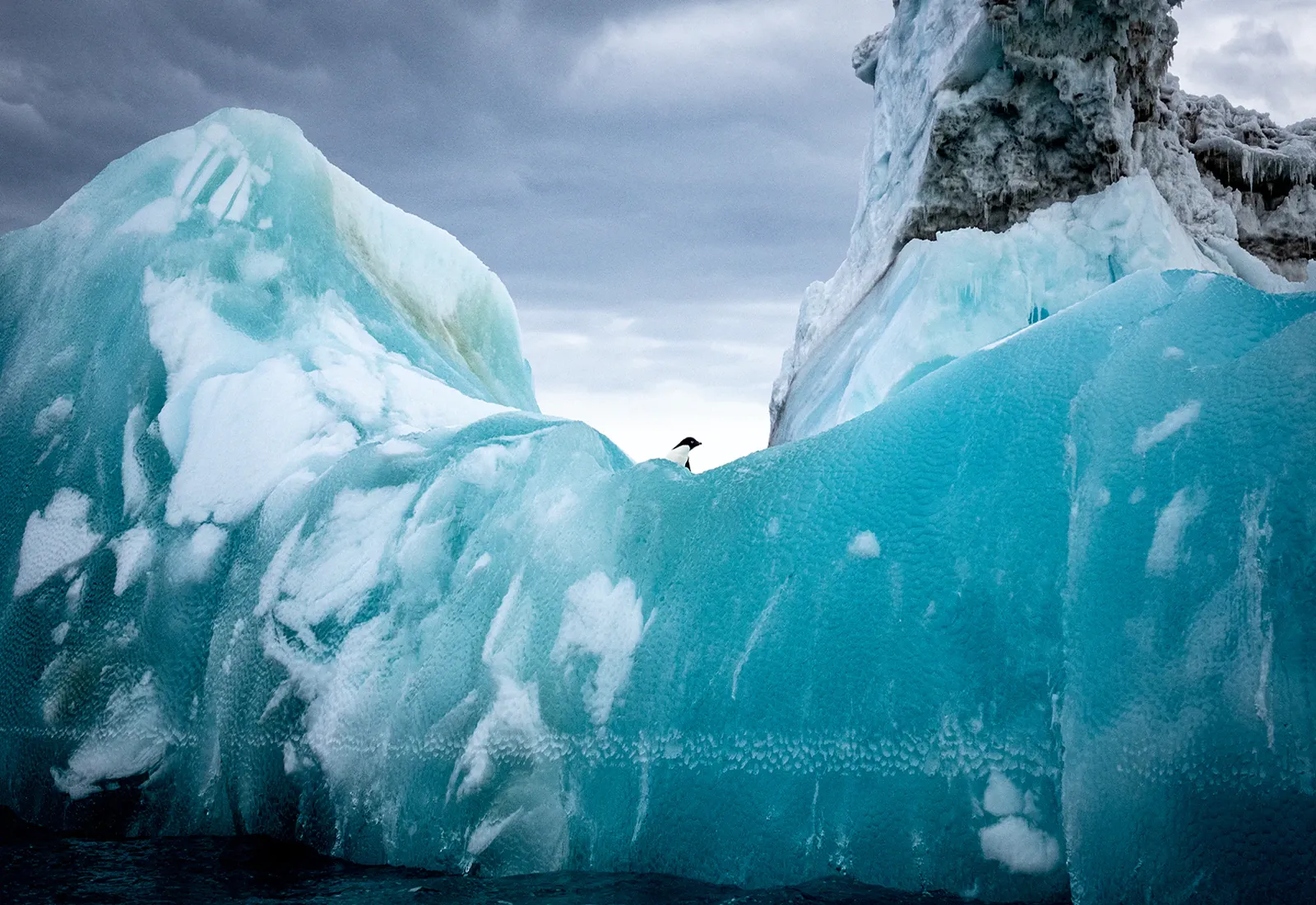
A penguin star of Muir's short film Antarctic Waters. Photo: Supplied.
Kiwi musician Jordi Webber is also a finalist in the Music Video category with his newly released song Juice and Lemonade.
Substance and style
While the phrase ‘substantial equivalency’ may not look like it at first glance, it’s something to crow about for Massey University’s College of Creative Arts Toi Rauwhārangi.
CoCA has been declared up there with the world’s best in the eyes of the United States accreditation body, the National Association of Schools of Art and Design (NASAD).
While only US Colleges can be accredited, the highest esteem NASAD awards an international institution is substantial equivalency. Only a handful of schools around the world have the merit and CoCA is the only one in New Zealand, with 19 of their courses granted this level of recognition.

